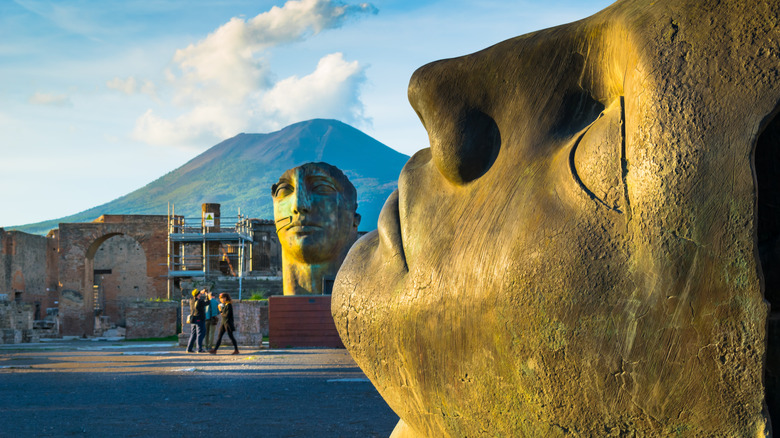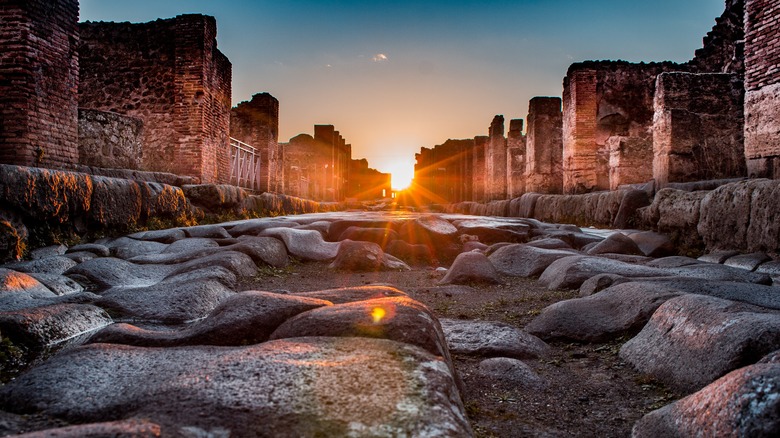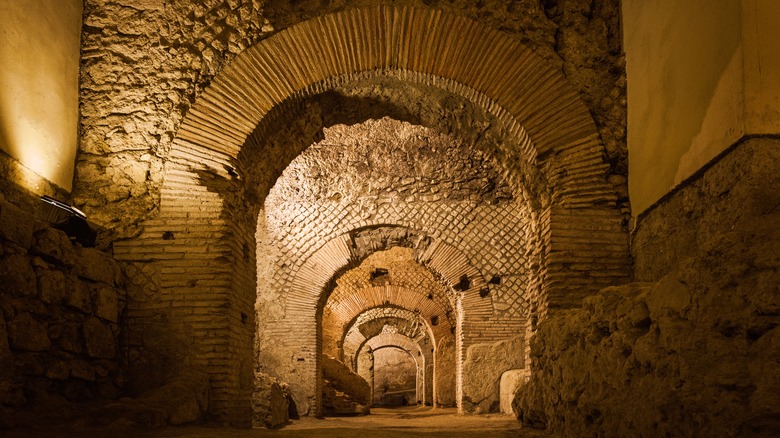Why Naples Is A Must-Visit Destination For History Buffs
It was August 24, in the year A.D. 79 when the prehistoric, monstrous, and looming volcano known as Mount Vesuvius woke up from its centuries-old slumber, erupting violently for nearly 20 long and terrorizing hours. Located near the Gulf of Naples — within the region of Campania, Italy — its unforgiving clouds of toxic, gaseous fumes and thick ash rose swiftly, creating a flume nearly 20 miles high, and 10 miles wide: Blackening and suffocating the Southern Mediterranean sky and air within minutes.
Scalding lava, pumice, and volcanic debris raced down its peak, furiously engulfing the ancient cities of Pompeii, Herculaneum, Stabiae, and Torre Annunziata, forever destroying them within the first two hours of its catastrophic explosion. The intense and deadly superheat from the second of several eruptions that day, killed thousands of citizens in its burning vicinity within seconds, as reported by National Geographic. This once dormant, giant stratovolcano had been rumbling silently from within since A.D 64. after being awoken by a major earthquake within the Campania area: Waiting to come to life and take lives in its fatal wake 15 years later. This historical event combined with the fact that Naples, Italy is recorded as one of the oldest cities in the world, per ESA, it's a must-visit destination for history buffs and enthusiasts alike.
Remembering and honoring ancient Naples in modern times
The archaeological areas of Pompeii, Herculaneum, and Torre Annunziata have been inscribed as a UNESCO World Heritage Site, as has the Historic Centre of Naples, making Naples, Italy a fascinating wonder of history, ancient artifacts and relics, museums, cultural heritage sites, and much more. Visitors to this amazing city, and capital of the Campania region, can immerse themselves in the fascinating work and findings of the Archaeological Park of Pompeii. Geared at conserving and preserving the artifacts and relics found beneath Mount Vesuvius' devastation upon Pompeii, it's also home to nine additional historical and excavation cultural sites that are open to the public.
Further your love for history and geology in this area, by hiking to the top of where the destruction of these ancient cities all began: Mount Vesuvius. Not for the faint of heart, once you arrive at the base area of this massive volcano, it's a 90-minute hike from the start of the trail to the top of the crater. Keep in mind, this is a respectful hike up to the still active, yet sleeping giant, and comes with some risks. Vesuvius Tickets must be purchased in advance online. Hikers should be physically fit, in good health, and wear appropriate hiking attire.
A city rich in history and culture, Naples is more than just pizza
Visitors to the city also known as the birthplace of pizza and Italian gastronomical cuisine can connect with ancient Naples and its profound history via an underground, 280-mile network of tunnels known as Naples Underground, within its famous historic center. Or one can make their way to the many museums such as the Museo Archeologico Nazionale di Napoli, or find themselves walking through the darkened catacombs of two of Naples' patron saints. Home to castles, basilicas, cathedrals, and palaces, Naples, Italy is a historian's dream. And, according to CNN Travel, it was voted "one of the best destinations to visit in 2022."
So, whether you're a history buff or a novice, Naples has something for everyone to delve deeply into and ponder upon. Looking back at, and partaking in legendary moments in time that will forever remain deep within the recessed pages of history books for centuries to come, is a monumental experience that one cannot and should not ever forget.


